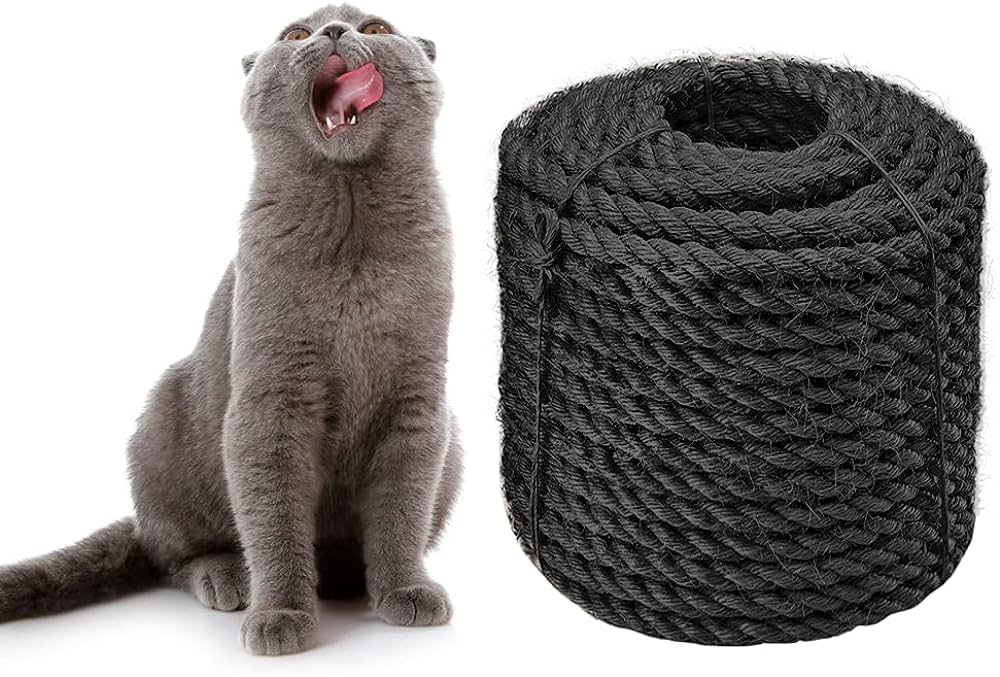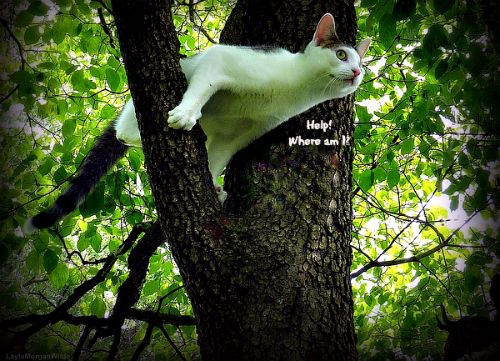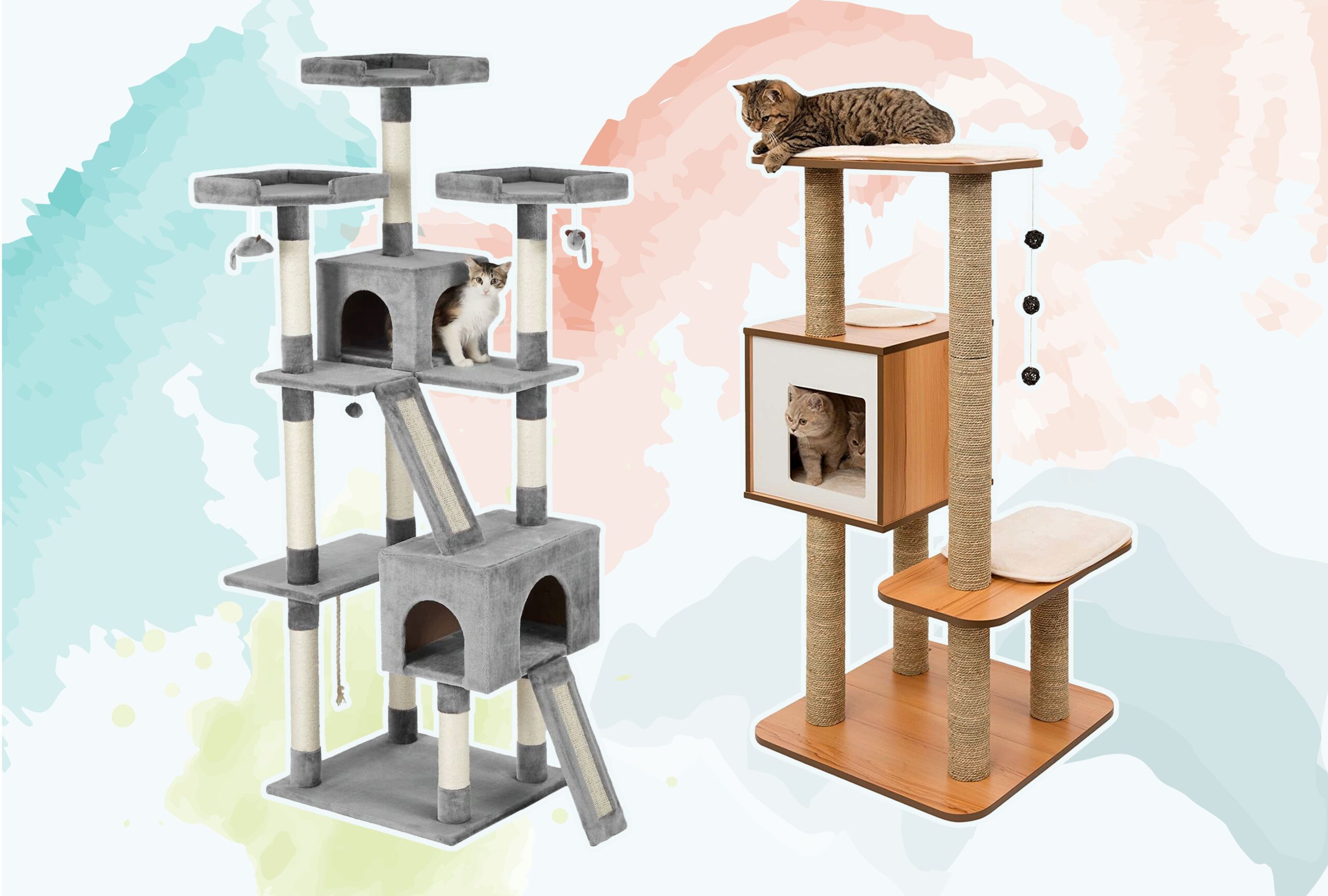Your cat may have stopped using his cat tree due to boredom or discomfort. It could also be a sign of a health issue.
Cats are renowned for their love of climbing and perching in high places — a behavior catered to by cat trees. However, a decline in use can signal a need to investigate. Cat trees provide cats with a sense of security, a place to exercise, and a territory they can claim as their own.
Therefore, when a cat suddenly ignores this piece of furniture, owners should take note. Factors that can contribute to this change include a loss of interest due to the lack of new stimuli or the tree’s location, issues with the tree itself, such as stability or cleanliness, or medical conditions that could make climbing painful. It’s important to assess the situation to ensure your feline friend’s comfort and well-being.

Credit: www.pinterest.com
Feline Preferences And Changes
Cats are creatures of habit, yet sometimes even the most predictable feline friends can surprise us. Particularly, the mystery deepens when your cat suddenly abandons his beloved cat tree. Understanding why your cat may bid farewell to his vertical haven can help in ensuring he stays engaged and content.
Shifting Interests
Cats evolve in their play and rest habits, just like people develop new hobbies. If your cat has stopped using his cat tree, consider the following possible triggers for his shifting interests:
- New toys or furniture may attract more attention.
- Change in environment or routine can lead to new preferences.
- Seasonal changes may affect where your cat feels most comfortable.
- A cat tree placement might no longer be appealing; consider a new spot.
Observing your cat’s daily routine will give clues to what has changed. Keep his environment stimulating with regular updates to his play areas.
Age-related Preference Shifts
As cats grow older, their inclinations change. Young cats often seek high vantage points for fun and exploration. Older cats, on the other hand, might prefer comfort over climbing. For senior cats, consider these aspects:
| Age | Preference |
|---|---|
| Kitten | High energy, enjoys climbing |
| Adult | May enjoy variety, both climbing and relaxing |
| Senior | Prefers easy access and comfort |
Joint discomfort or health issues can also make climbing less appealing. Soft, low-height resting spots might be more suitable for them. Always provide accessible and comfortable alternatives that cater to your cat’s age-related needs.

Credit: www.amazon.com
Comfort And Accessibility Issues
Is your feline friend ignoring the cat tree lately? Let’s explore the potential comfort and accessibility issues that may have caused your kitty to give up on their once-beloved perch.
Wear And Tear On The Cat Tree
Cat trees see a lot of action over time. Scratching, climbing, and jumping can take a toll. Here are some signs that might indicate it’s time to refurbish or replace the cat tree:
- Loose fabric or rope can make the surface slippery and unsafe.
- Splintered wood or exposed nails can pose a risk to your cat’s safety.
- A wobbly base may deter your cat from climbing, as they prefer stable ground.
Easier Access To Other Perches
Cats love high places. But sometimes, other spots in the home become more appealing.
| Old Cat Tree | New Perches |
|---|---|
| Hard to reach platforms. | Easily accessible shelves or furniture. |
| Less comfortable padding. | Comfy cushions or beds elsewhere. |
| Located far from family activity. | In the middle of social areas. |
Consider your cat’s current preferences for a good snooze or a watchful perch. It might be time to rearrange the tree or introduce new lounging options that blend with their needs and your home’s layout.
Health Concerns Impacting Behavior
Cats often change behavior due to health issues. If your cat has suddenly given up on its beloved cat tree, this might be a sign. Let’s explore some health concerns that could be influencing this change.
Arthritic Joints And Mobility
Age or injury can lead to arthritis in cats. Climbing might now cause pain. If your cat hesitates before jumping or avoids the cat tree altogether, it’s crucial to consider joint health. A vet can help diagnose arthritis.
Weight And Fitness Concerns
Cats can become overweight due to lack of exercise or overfeeding. An overweight cat might struggle to climb or show less interest in activity. Ensuring a balanced diet and encouraging play can help manage weight.
- Maintain regular vet check-ups
- Consider weight management diets
- Use toys to encourage movement
Keep a close eye on behavior changes. Early detection of health issues can prevent more serious problems.
Territorial Dynamics And Stress
Understanding your cat’s behavior can be tricky, especially when it comes to their beloved cat tree. Several factors can lead to a change in their usual habits and it’s important to consider territorial dynamics and stress in these situations. Cats are deeply territorial creatures by nature. A shift in their environment or social structure can unsettle them. Let’s delve into how new pets and changes in the home environment can disrupt your cat’s peace and why they might abandon their cat tree.
New Pets In The Household
Introducing new pets can stir up your cat’s sense of territory. Cats often see their cat tree as a safe, personal space. When a new animal enters the family, your cat may feel its territory is invaded. Pay close attention to these behavioral changes:
- Reluctance to climb the tree when the new pet is around.
- Marking their territory more frequently near the cat tree.
- Expressing signs of stress or aggression when they approach the tree.
Create a gradual introduction process for the new pet to help your cat adjust. Give your cat extra attention to reassure them of their place in your home.
Changes In The Home Environment
Even small tweaks in your home can stress your cat out. Consider these factors:
- Did you move the cat tree to a new spot?
- Are there new sounds or scents around the cat tree area?
- Have there been changes in the household routine?
Your cat’s response might be to avoid the tree. Try to keep the area around the cat tree consistent. A familiar setting means a comfortable and happy cat.
| Issue | Impact on Cat Behavior | Possible Solutions |
|---|---|---|
| New pets | Stress, Territorial issues | Slow introductions, Extra affection |
| Home changes | Anxiety, Avoidance | Maintain consistency, Reassure your cat |
Improper Tree Placement And Usage
Improper Tree Placement and Usage can leave your furry friend disinterested in his cat tree. When a cat tree isn’t appealing, cats might ignore it. To fix this, understand what might be wrong.
Suboptimal Location
Your cat tree might be in the wrong place. Cats love to look outside. They also want to be where the family spends time. A tree hidden in a corner might not get used. It should be near a window or in a living area. Make sure it’s not in a noisy spot. A cat tree should provide a safe, high perch. Your cat will avoid a tree that feels insecure or wobbly.
Lack Of Stimulation And Attraction
A boring cat tree will not excite your cat. Cats need fun and challenge. Think about adding toys or catnip. A dangling toy on a cat tree can catch a cat’s attention. Try different toys to see what your cat likes best. Place them at various levels on the tree to encourage climbing. Sometimes placing your cat’s favorite treat on the tree can tempt him to climb. Cats also like scratching. Make sure there’s a good scratching surface like sisal rope.

Credit: m.facebook.com
Frequently Asked Questions Of Why Did My Cat Stop Using His Cat Tree
Why Is My Cat Ignoring His Cat Tree?
Cats may snub their cat trees if they become uninteresting or uncomfortable compared to other spots. Refreshing the tree with new toys or placing it near a window might rekindle interest. Ensure the tree’s stability; cats avoid wobbly structures for safety reasons.
Can A Dirty Cat Tree Deter Use?
Absolutely. Cats are clean creatures and a dirty tree can deter them. Regular cleaning of the cat tree is crucial. Remove hair and refresh with catnip occasionally to maintain its allure.
Does Cat Tree Placement Affect Cat Usage?
Positioning is key. Cats prefer tree locations with a good view or social relevance, like by a window or family area. A poorly placed cat tree, hidden or in a low-traffic zone, may be ignored.
How Does A Cat’s Age Impact Cat Tree Use?
As cats age, they may use cat trees less due to decreased mobility or joint pain. Providing lower perches or steps can help older cats continue to enjoy their tree.
Conclusion
Understanding your cat’s changing preferences can be challenging. It’s clear that various factors, from comfort to curiosity, impact their behavior. To rekindle their interest in a beloved cat tree, consider the discussed tips or seek advice from a vet. Remember, a happy cat leads to a joyful home!



